History buffs and tourists who enjoy immersing themselves in the culture of their destination will get a thrill out of visiting the Higashiyama District in Kyoto. The picturesque district has managed to preserve a lot of the original structures that made the area so desirable in the past to keep the allure alive.
Visiting the Higashiyama District in Kyoto feels like traveling back in time to experience what Kyoto was like centuries ago, while also enjoying traditional and modern Japanese fares.
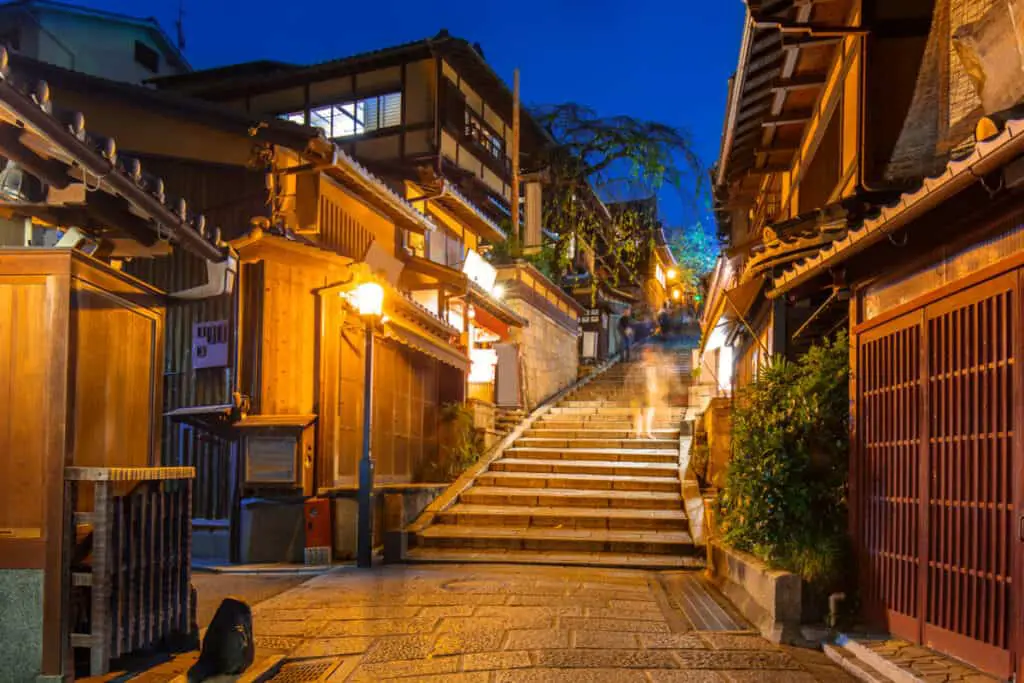
Higashiyama District At A Glance
There is so much to take in when visiting Higashiyama District that it’s worth staying in the area for a few days.
Walking through the area, you will stumble upon traditional homes that have been maintained for centuries, with some being used as tourist destinations or shops.
Higashiyama District not only draws in tourists from around the world but tourists from within Japan itself.
This is due to the vast amount of history that can be observed today. Additionally, there are many temples and shrines in the district to visit.
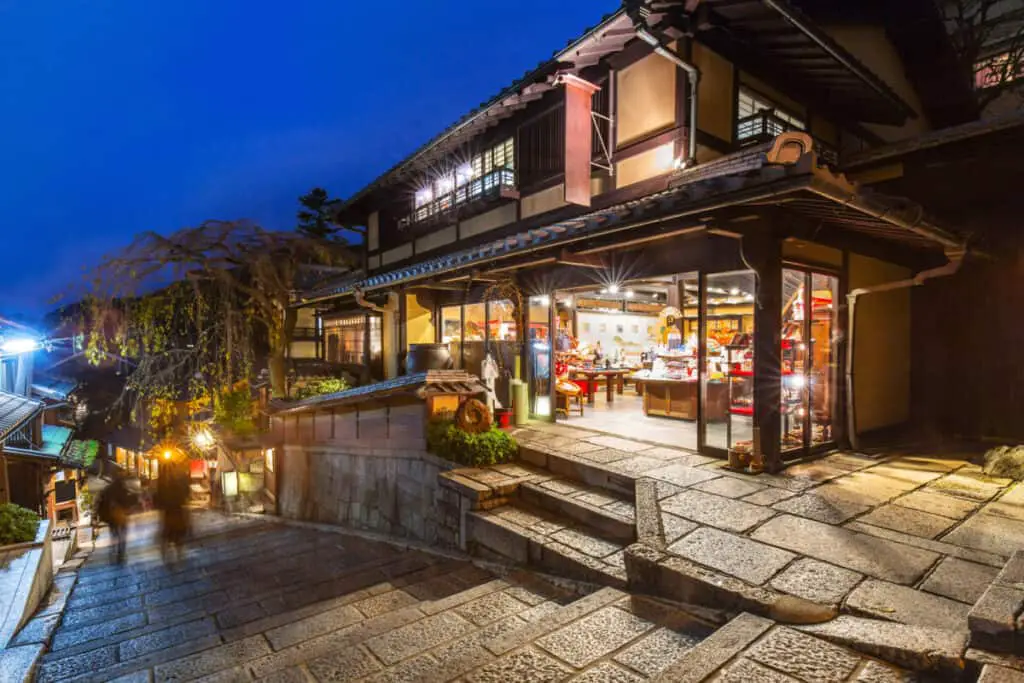
Visitors can also enjoy tea at one of the tea houses in the district, or fill up on traditional Japanese food at one of the local restaurants.
There are also pottery stores that are a must-see, giving you a glimpse at some of the artistic traditions of Japan that have been passed down through generations.
The Cherry Blossoms
Japan is known for cherry blossom trees, and they are in full bloom around the Higashiyama District in the Spring.
While this is a big draw for tourists who are in Kyoto in the Spring, the Higashiyama District really is a sight to behold any time of year.
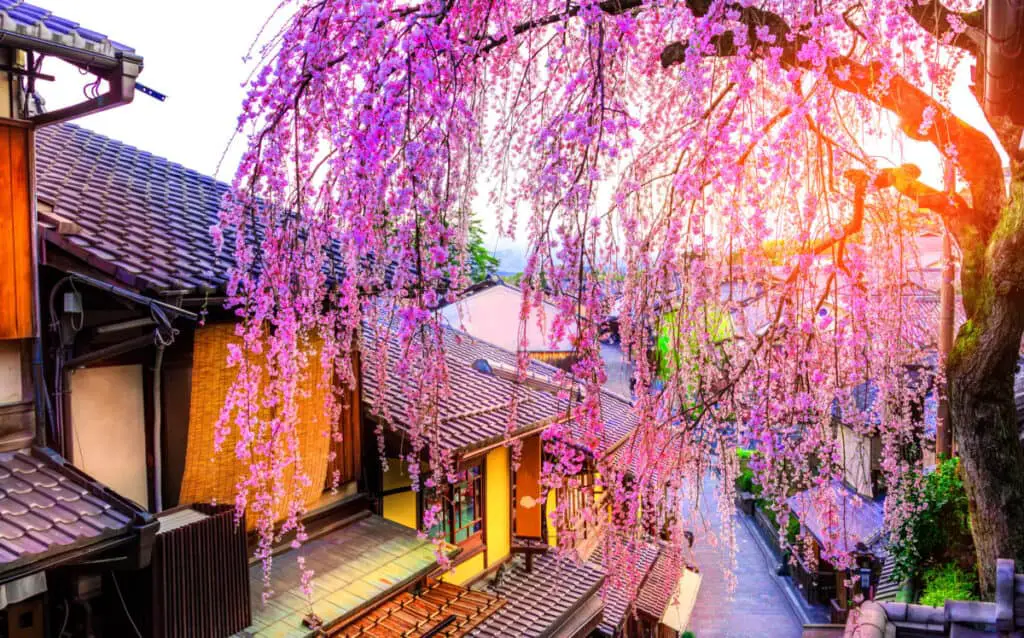
Machiya
A machiya is a traditional wooden house in Japan. Many of the machiyas in Higashiyama have been converted into different businesses, such as cafes or shops with local wares.
This offers a unique opportunity for tourists to be able to see inside one of these traditional wooden houses, as homes aren’t often built in this style anymore.
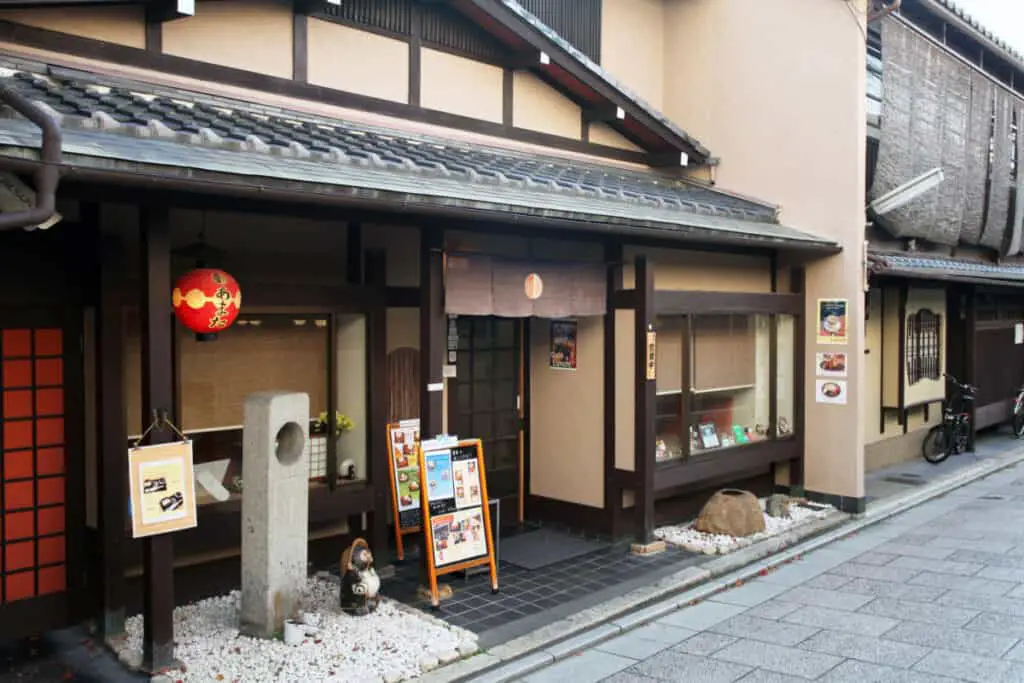
Higashiyama District At Night
Strolling through the Higashiyama District at night is as picturesque as it gets.
It’s a chance to admire the historic architecture of the area amongst all the illumination from the lights that turn on at night. It is a favorite amongst many photographers who explore the area.
The Feudal Era Of Japan
The feudal era of Japan took place in the Kamakura Period, between the 1100s and the 1600s.
During this time, the emperor was no longer considered the governmental body that was to rule Japan. Rather, the shogun, or the Japanese military, took over that role.
It was a somewhat unstable time in Japan but was an important part of Japan’s history nonetheless.
Gion District
The Gion District is regarded as being one of the most famous geisha districts in Kyoto.
You may even have the opportunity to see geisha and maiko, who are in the process of being trained to become geisha, strolling the beautiful streets.
You are also able to get some shopping done in the area and get an outside view of some of the very exclusive teahouses and traditional homes in the district.
It can be difficult and very expensive to get into one of these teahouses, but you can always try.
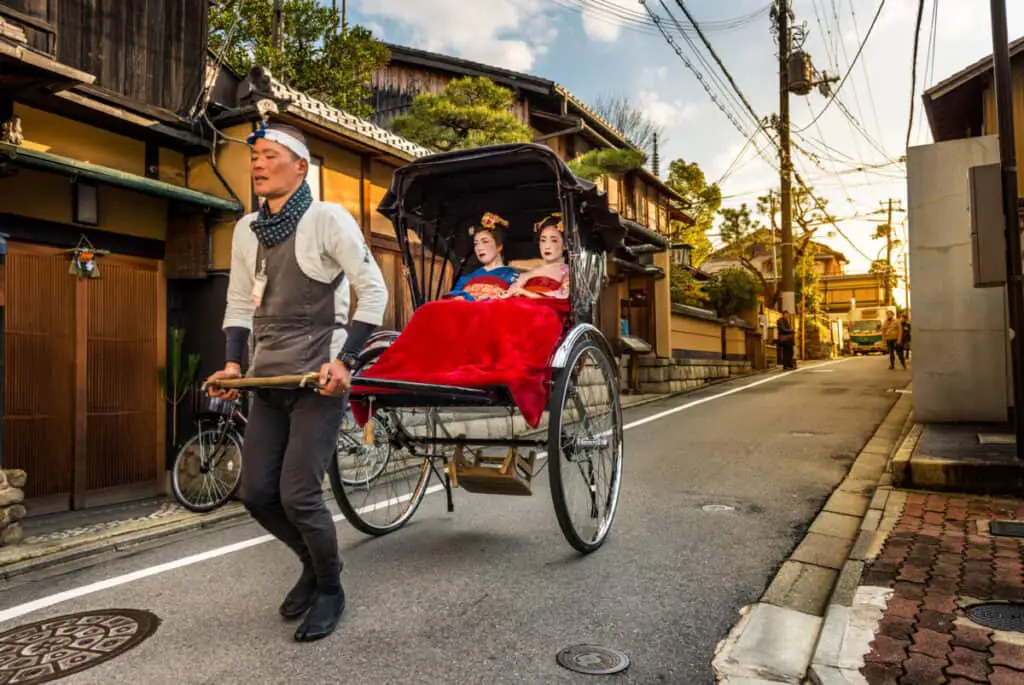
Maruyama Park
Maruyama Park Official Website
If you are visiting Higashiyama District in the Spring, heading to Maruyama Park will give you an unforgettable view of some cherry blossom trees in all their glory.
There is also the iconic weeping cherry blossom tree in the area which has lights that illuminate the tree at night.
The area is beautiful any time of the year, as the park also has orchards and gardens to explore.
There are also restaurants in the park so you can sit and have a bite to eat after strolling through the oldest park in Kyoto.
Maruyama Park Location Via Google Maps
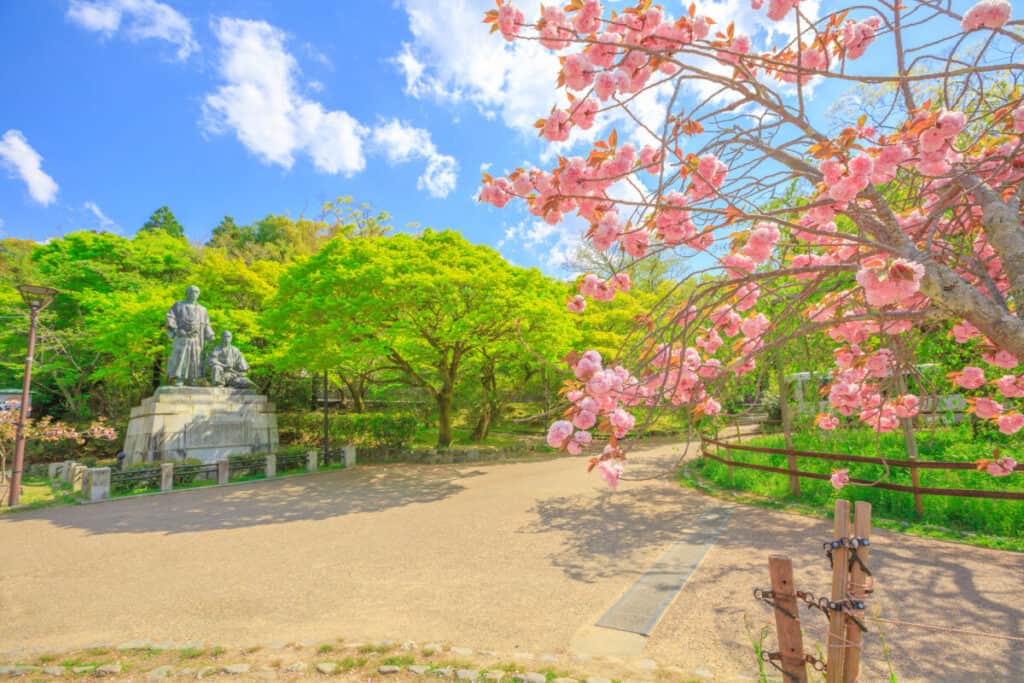
Kodaiji Temple
Kodaiji Temple Official Website
This beautiful temple was built to honor Toyotomi Hideyoshi, who was a prominent figure in Japanese history.
His wife, Nede, is also honored at this shrine. This temple is important to the Buddhist faith.
There are stunning gardens that surround the temple built with greenery and/or rocks.
The temple itself is beautifully built with some luxurious details. The main hall of the temple is open to visitors, though it had to be rebuilt in the early 1900s due to a fire.
Kodaiji Temple Location Via Google Maps
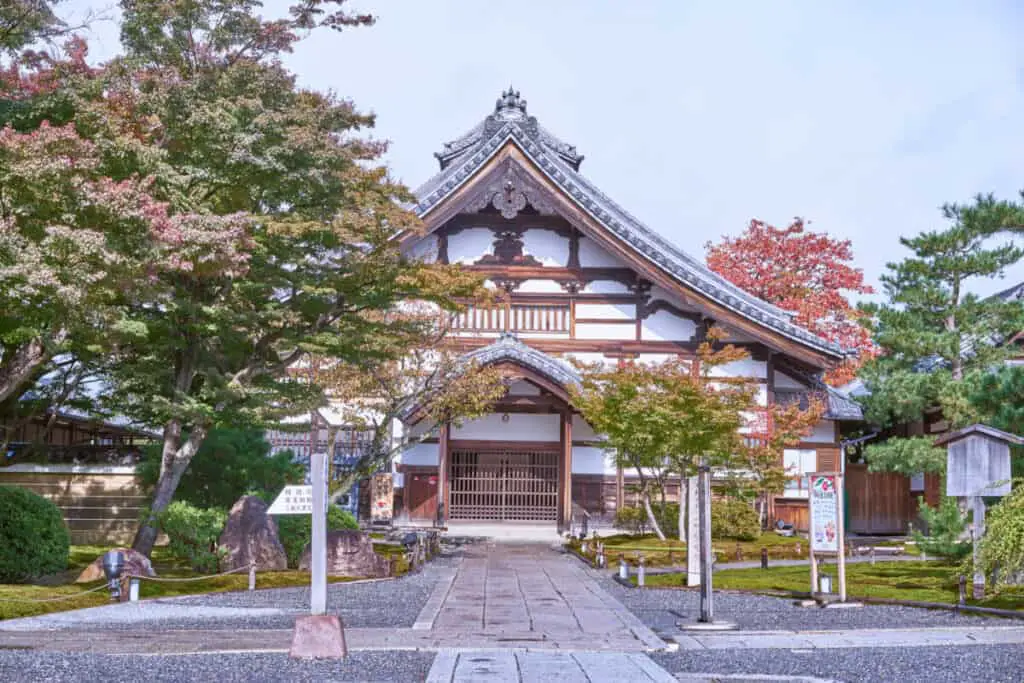
Kiyomizu Temple
The Kiyomizu Temple is expansive and multi-leveled and was built to honor Kannon. Kannon is the goddess of mercy in the Buddhist faith.
One really interesting fact about this traditional and well-maintained temple is that the structure was built without the use of nails.
Gazing out into the horizon beyond the Kiyomizu temple is breathtaking, as there are trees and greenery that surround the area.
Kiyomizu Temple Official Website
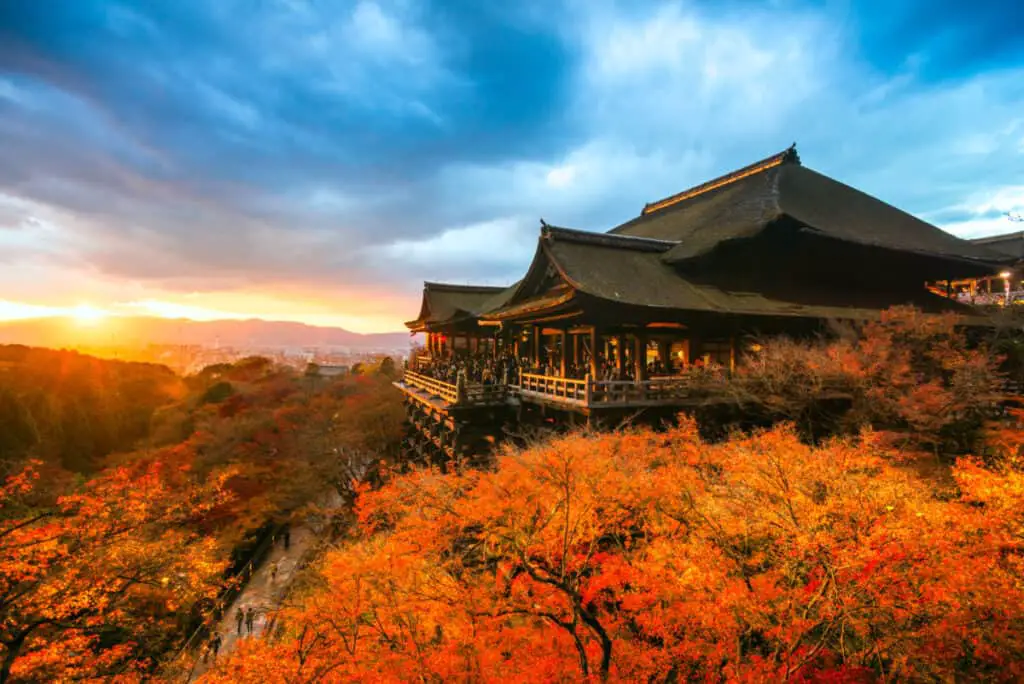
There is also the Otowa waterfall nearby, which visitors can drink from, as it is said that your wishes will be granted by doing so.
Just outside of the Kiyomizu Temple, there are some small shops where you can find souvenirs to bring home, or trinkets to decorate your home with.
The Philosopher’s Path
The Philosopher’s Path will take anyone’s breath away, from the well-maintained stone path to the giant cherry blossom trees crowding the path.
The path is right beside a canal, and it often gets busy in the spring due to all of the colorful cherry blossom trees being in full bloom.
The Philosopher’s Path was named as such for Nishida Kitaro, a famous Japanese philosopher. Kitaro would often walk this path and meditate.
Philosopher’s Path Location Via Google Maps
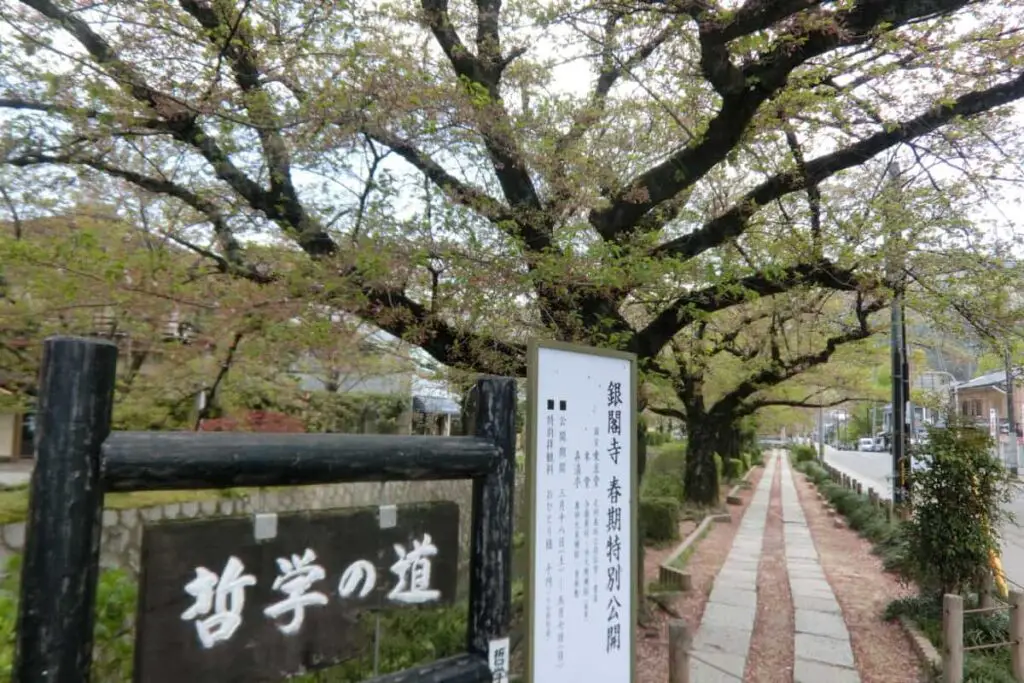
Yasaka Pagoda
The Yasaka Pagoda is a popular destination for history lovers, as the bones of the structure date back to the 500s. However, the original building was burnt down in the 1400s and was eventually rebuilt.
You are able to go inside of the pagoda to get a nice view of the district, but the pagoda itself is also something to capture, especially when it’s lit up at night.
Yasaka Pagoda Official Website
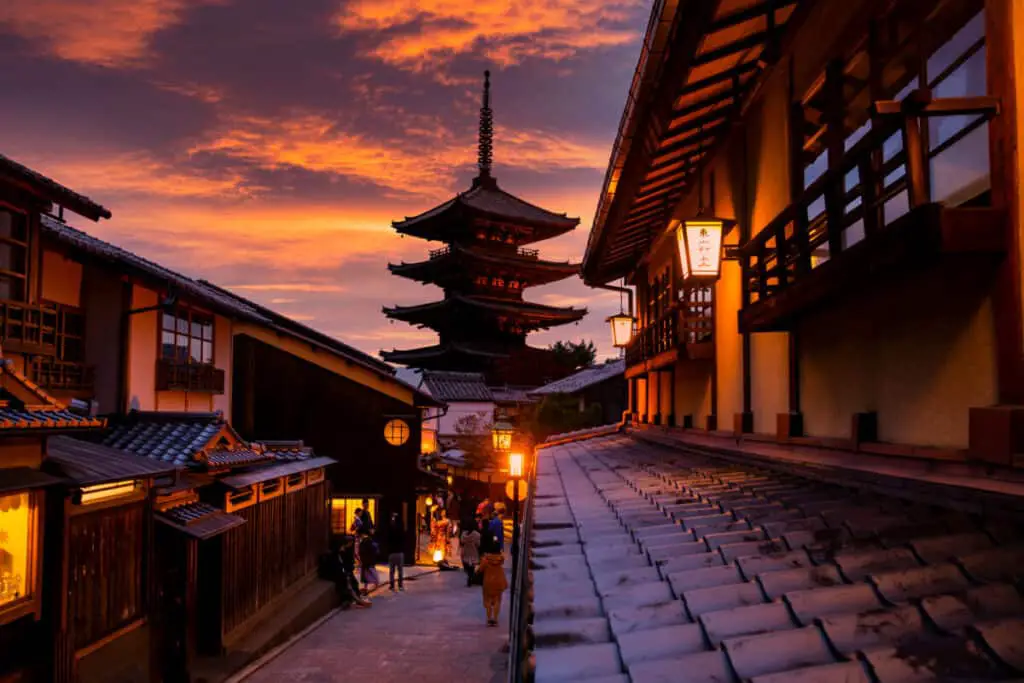
Yasaka Shrine
The Yasaka Shrine is one of the prominent shrines in Kyoto and is also often referred to as the Gion Shrine.
At night, the shrine is illuminated with lanterns that advertise some of the local businesses in the area.
Businesses make a donation to the shrine in order to get their names on one of the lanterns.
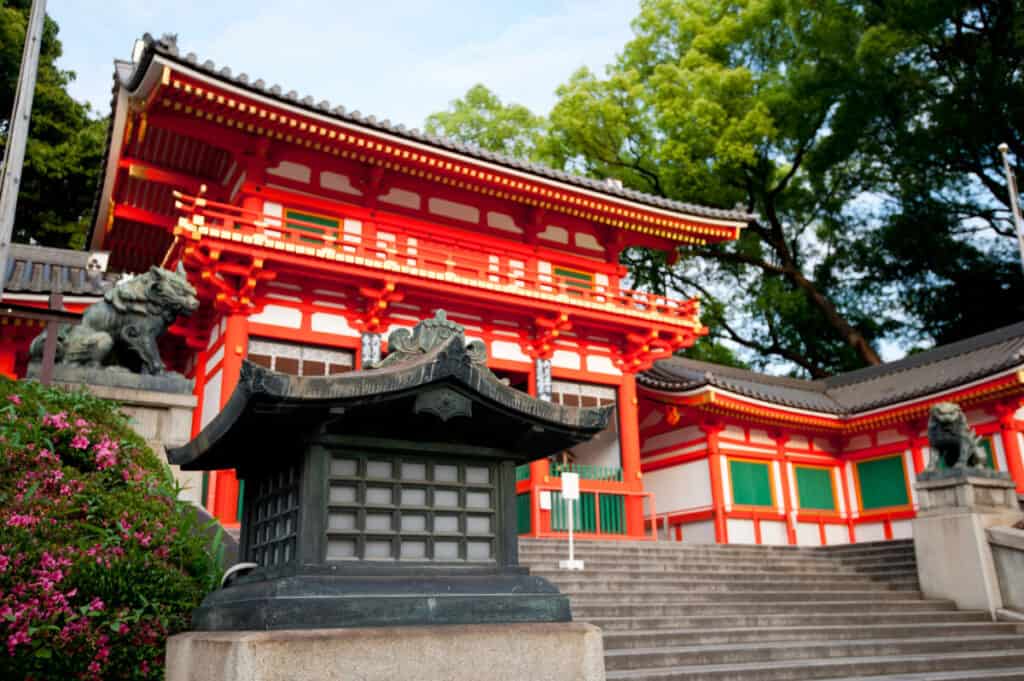
Yasaka Shrine Official Website
Every summer, the Gion Festival takes place in the shrine’s vicinity. This festival has been held for over 1000 years, and features performances and floats parading throughout the area.
This festival draws many tourists and people from all over Japan each year, as it is one of the most notable festivals in Japan.
Heian Shrine
The Heian Shrine is one of the more modern shrines, having only been built in the 1800s. It was erected to pay homage to former emperors of the area.
A traditional torii gate sits at the entrance of the shrine, and part of the shrine was modeled after the Imperial Palace from the Heian period.
There are also museums on-site to learn more about what occurred during the Heian period of Japan.
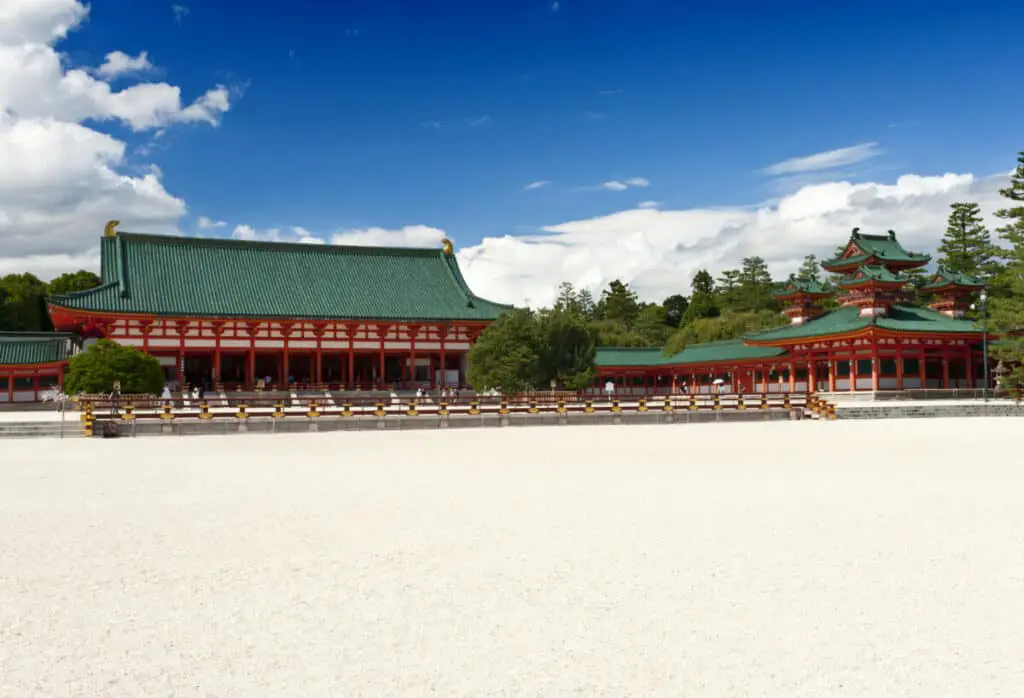
Shogunzuka Mound
There is some really interesting history about how this area came to be. It is said that Emperor Kammu, who reigned in the 8th century, came to this area to create a new capital city and pray for its prosperity and peace.
On the mound, you are able to get a glimpse at part of a shogun statue that Emperor Kammu is buried.
The area offers spectacular views of gorgeous natural scenery and the Higashiyama District itself.
Hanatoro
One of the best times to visit the Higashiyama Historic District is in March, as you’ll have the opportunity to witness Hanatoro.
Hanatoro means flower and light road and is an event where a large portion of the Higashiyama district is illuminated with lanterns and lights and floral displays.
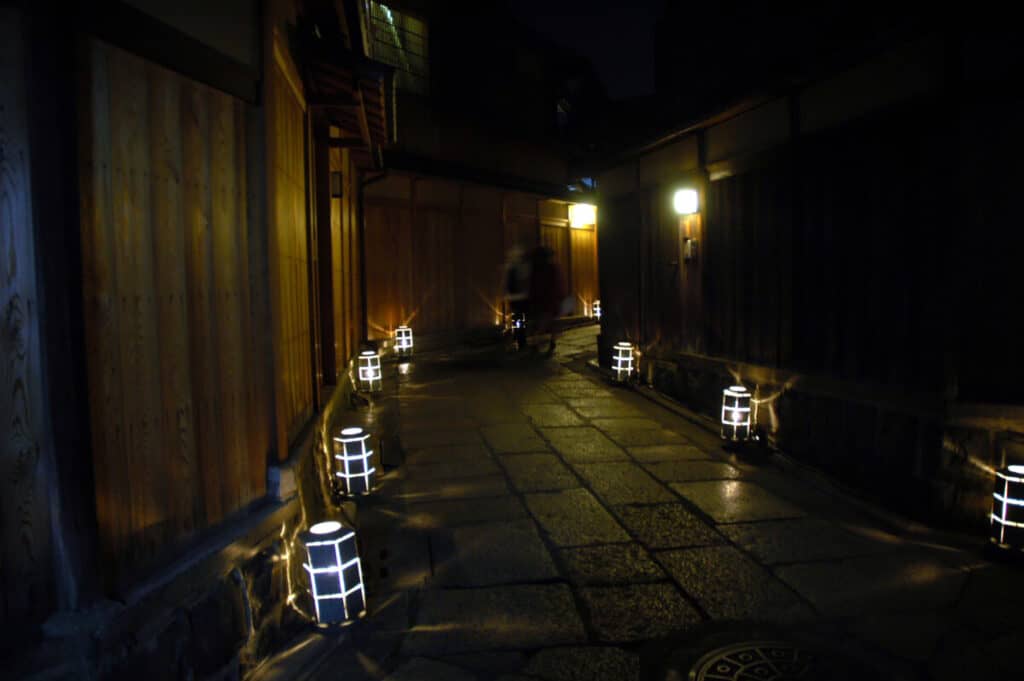
During this time, many of the temples and shrines in Higashiyama will participate in the festivities, even extending their hours some nights for tourists to visit.
Furthermore, there is a chance you’ll stumble upon some excellent street performances.
In the Kodaiji Temple Park, there is usually a stage built during this time where concerts and performances are conducted.
Some of the shops in the area will also stay open a little bit later in order to let tourists take a glimpse at their offerings.










